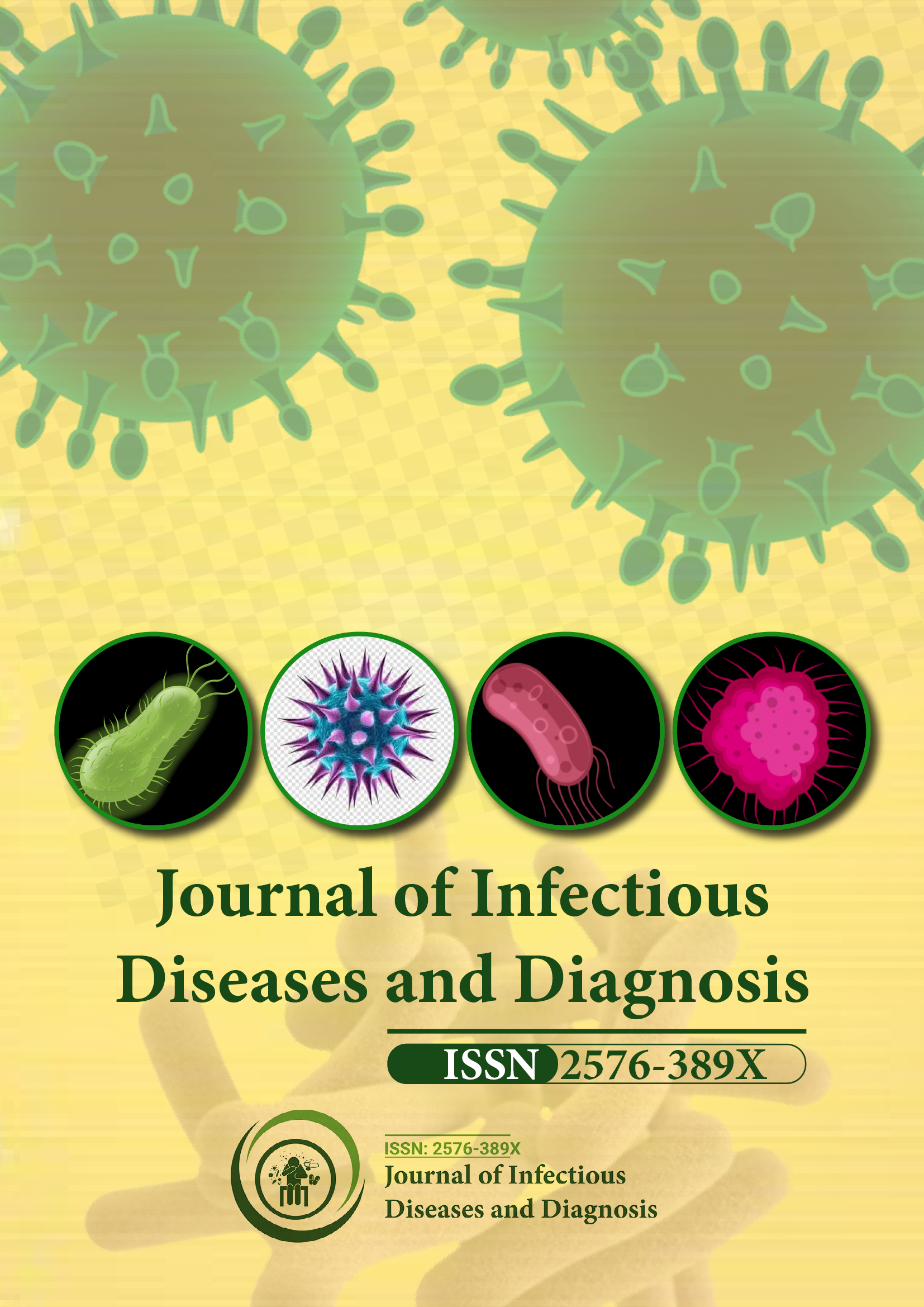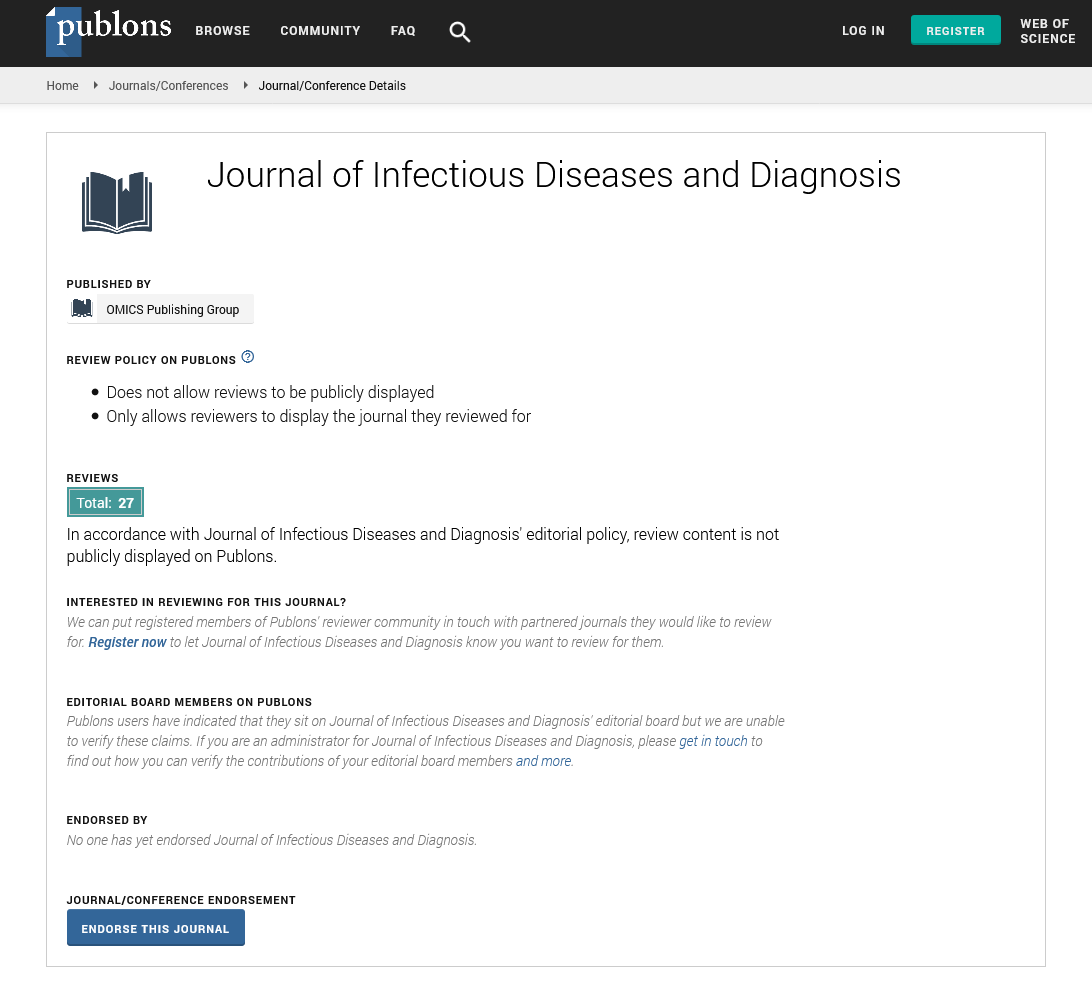Indexed In
- RefSeek
- Hamdard University
- EBSCO A-Z
- Publons
- Euro Pub
- Google Scholar
Useful Links
Share This Page
Journal Flyer

Open Access Journals
- Agri and Aquaculture
- Biochemistry
- Bioinformatics & Systems Biology
- Business & Management
- Chemistry
- Clinical Sciences
- Engineering
- Food & Nutrition
- General Science
- Genetics & Molecular Biology
- Immunology & Microbiology
- Medical Sciences
- Neuroscience & Psychology
- Nursing & Health Care
- Pharmaceutical Sciences
Perspective - (2023) Volume 8, Issue 1
Creating a Framework for Strengthening Prevention of Mother-to-Child Transmission of HIV in Low-Resource Settings
Joanne Lacy*Received: 02-Jan-2023, Manuscript No. JIDD-23-20471; Editor assigned: 04-Jan-2023, Pre QC No. JIDD-23-20471(PQ); Reviewed: 18-Jan-2023, QC No. JIDD-23-20471; Revised: 25-Jan-2023, Manuscript No. JIDD-23-20471(R); Published: 01-Feb-2023, DOI: 10.35248/2576-389X.23.08.199
About the Study
Prevention of Mother-To-Child Transmission of HIV (MTCT) is a crucial component of the global effort to end the HIV/AIDS epidemic. MTCT is the most common way that children become infected with HIV, and it remains a significant public health challenge in many parts of the world. To prevent MTCT, a comprehensive approach is needed that includes education, access to prenatal care, access to Antiretroviral Therapy (ART) for pregnant women living with HIV, and access to safe delivery and breastfeeding practices.
Education and counseling are critical components of MTCT prevention. Pregnant women living with HIV should be informed about the risks of MTCT and the benefits of ART. They should also receive support and counseling on how to protect their own health and the health of their baby. Access to prenatal care is essential for the prevention of MTCT. Pregnant women should receive regular prenatal care, including regular HIV testing and ART if needed, to reduce the risk of MTCT. This can also help ensure that pregnant women receive the care they need to maintain their own health.
ART has been shown to be highly effective in reducing the risk of MTCT. When taken consistently, ART can reduce the viral load in a pregnant woman, reducing the risk of transmitting the virus to her baby during pregnancy, childbirth, and breastfeeding. Safe delivery practices can also help prevent MTCT. Delivery by caesarean section can reduce the risk of MTCT, especially if the woman is not in labor or if her viral load is high. In addition, avoiding breastfeeding can further reduce the risk of MTCT, but in some parts of the world where safe alternative feeding options are not available, it may not be possible for women to avoid breastfeeding.
Finally, postnatal care for both the mother and the baby is crucial for the prevention of MTCT. The mother should continue to receive ART and the baby should receive ART for at least six weeks after birth to further reduce the risk of transmission.
HIV transmission in low resource settings can be a major challenge, especially in countries with limited resources for healthcare and education. This can lead to a lack of access to effective prevention methods, such as condoms and antiretroviral therapy, and limited testing and treatment options. Additionally, cultural and societal factors, such as stigma and discrimination towards those living with HIV, can further exacerbate the spread of the virus.
It is important for healthcare providers and policymakers to prioritize the needs of those in low resource settings in order to reduce the transmission of Human Immunodeficiency Virus (HIV). This can include increasing access to prevention methods and education, as well as improving testing and treatment options. Additionally, addressing cultural and societal factors that contribute to HIV transmission, such as stigma and discrimination, is also crucial in reducing the spread of the virus in low resource settings. Overall, effectively addressing the transmission of HIV in low resource settings will require a multifaceted approach that addresses both the medical and social aspects of the epidemic.
Conclusion
In conclusion, preventing MTCT requires a multi-faceted approach that includes education, access to prenatal care, ART, safe delivery practices, and postnatal care. By working together, we can help ensure that more women and children have access to the care and services they need to stay healthy and free from HIV.
Citation: Lacy J (2023) Creating a Framework for Strengthening Prevention of Mother-to-Child Transmission of HIV in Low-Resource Settings. J Infect Dis Diagn. 8:199.
Copyright: © 2023 Lacy J. This is an open-access article distributed under the terms of the Creative Commons Attribution License, which permits unrestricted use, distribution, and reproduction in any medium, provided the original author and source are credited.

